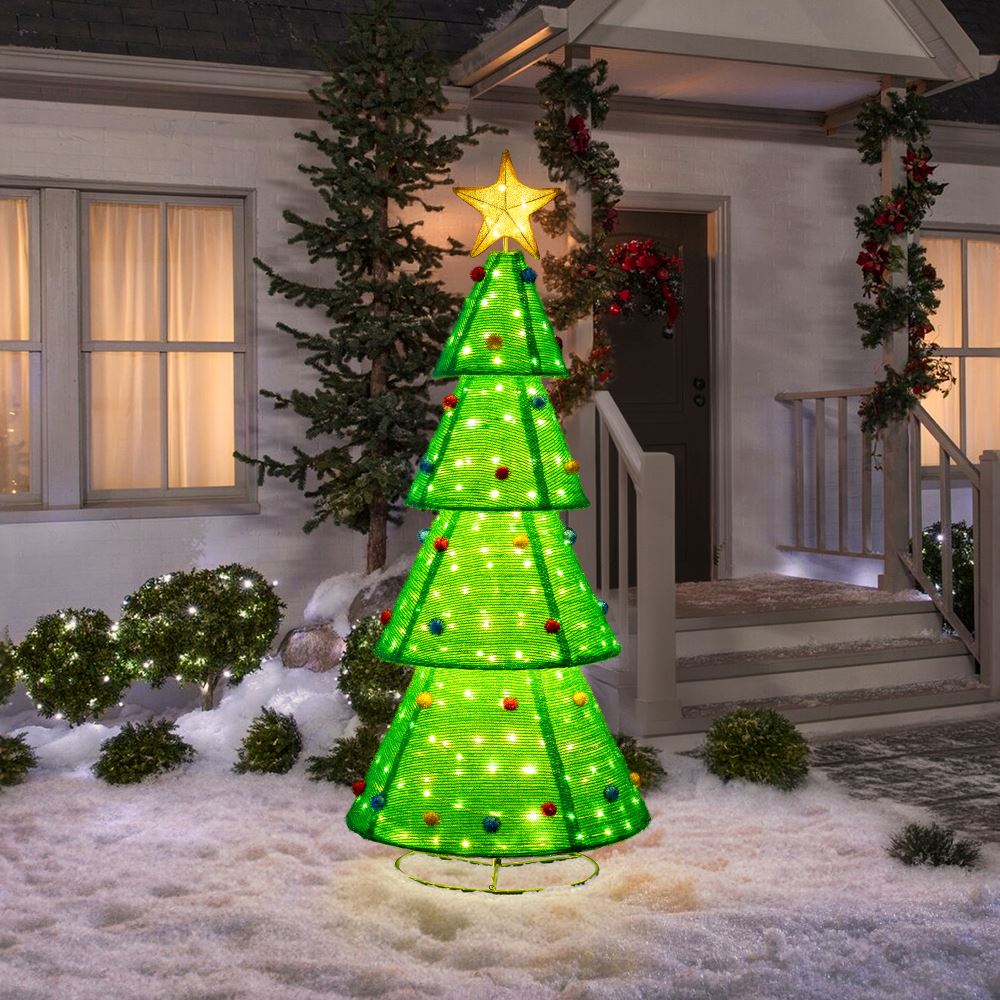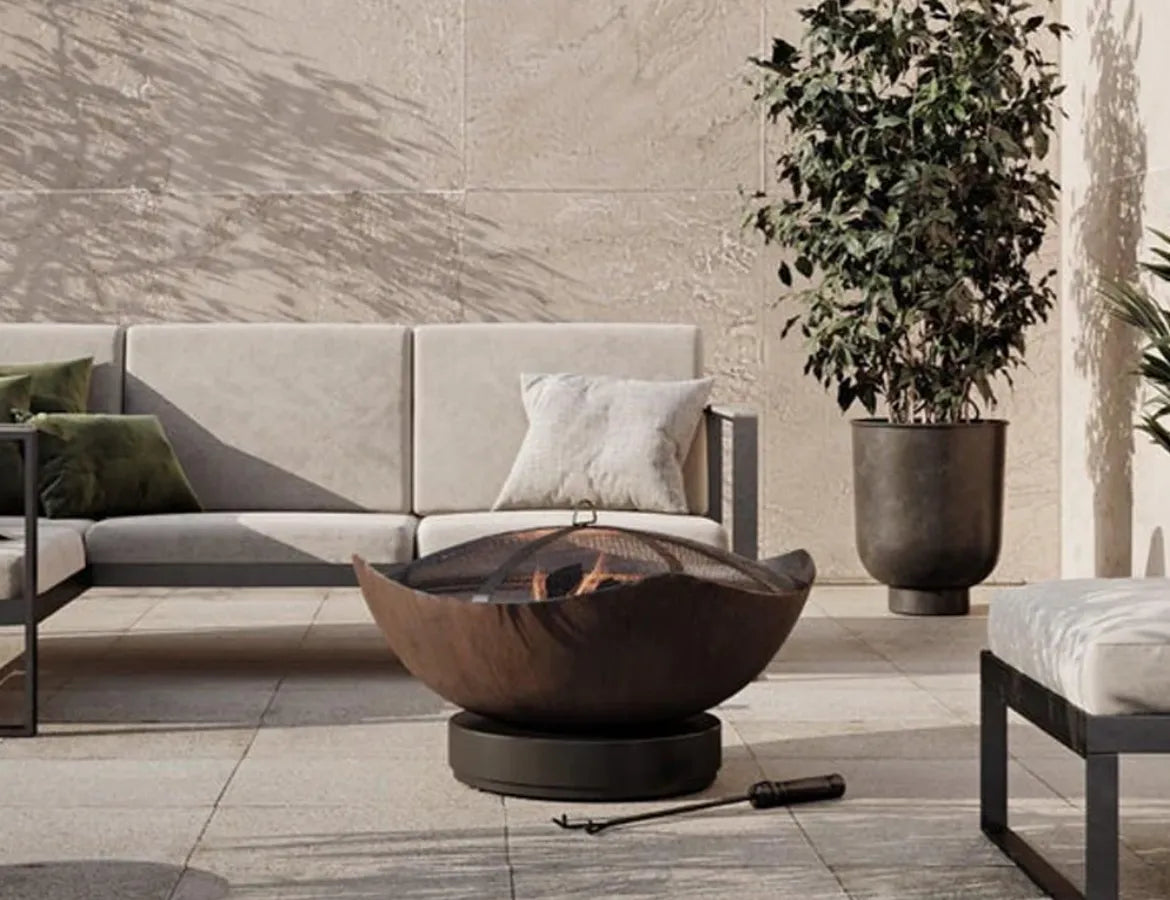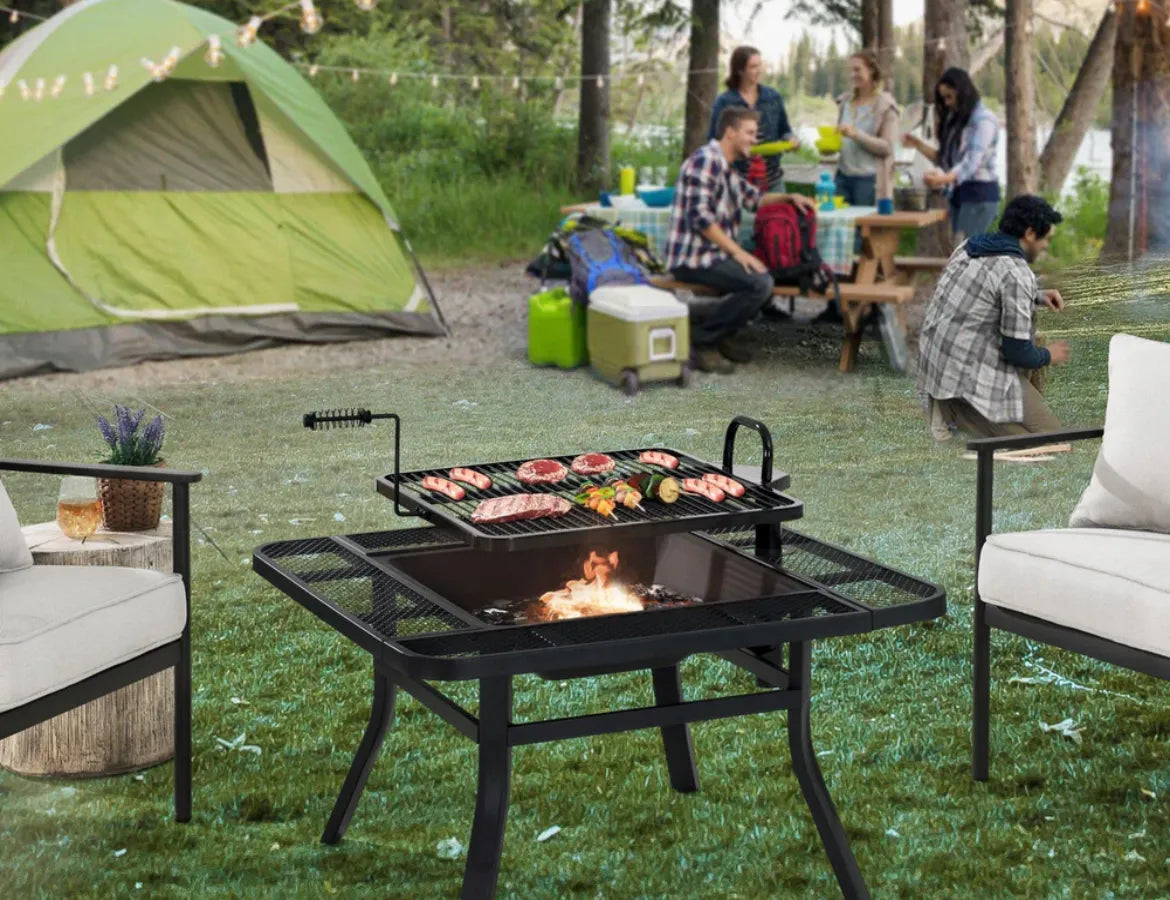A fire pit is one of the most rewarding additions to any backyard — it brings people together, creates warmth, and turns outdoor nights into memorable experiences. But when the temperatures drop and the snow begins to fall, many homeowners wonder: Should you cover your fire pit during the winter?
The answer is almost always yes. Protecting your fire pit from harsh weather not only extends its lifespan but also ensures it’s ready to spark back to life once spring arrives. Whether you have a propane fire pit table, a charcoal-burning pit, or a wood fire bowl, learning how to properly cover and maintain it through the cold months makes all the difference.
This guide explores why covering your fire pit matters, the best ways to do it, and how SUNJOY fire pits make year-round care effortless.
1. Why Winter Protection Matters for Fire Pits
Winter weather can be brutal on outdoor metal and stone structures. Even though most fire pits are designed for durability, prolonged exposure to freezing temperatures, snow, and moisture can cause damage.
Here’s what happens when you skip covering your fire pit:
- Rust and Corrosion: Metal components, such as grates or burners, can rust quickly when exposed to moisture and melting snow.
- Cracking or Warping: Repeated freezing and thawing can crack stone or ceramic materials and warp steel bowls.
- Blocked Burners: Ice and debris can clog gas fire pit lines, making it unsafe or unusable when spring returns.
- Ash and Moisture Build-Up: Uncovered wood fire pits often collect snow and water, creating a soggy mess that can accelerate decay.
In short, winter exposure weakens the materials that keep your fire pit both beautiful and functional. Covering it is a small effort that pays off in longevity and convenience.
2. Understanding Your Fire Pit Type
The right winter protection depends on the kind of fire pit you own. Different materials react differently to weather, and each requires a slightly different care approach.
Wood-Burning Fire Pits
These are the most vulnerable to moisture since leftover ash and soot absorb water easily. Once soaked, they can corrode the interior or leave unsightly stains.
Recommendation: Clean thoroughly, remove ash, and cover tightly with a waterproof cover.
Propane or Gas Fire Pits
These typically include burners, valves, and ignition systems that must stay dry to prevent malfunctions.
Recommendation: Shut off the gas, disconnect the propane tank if removable, and use a fitted PVC or canvas cover to keep the system sealed from moisture.
Smokeless and Portable Fire Pits
While compact and rust-resistant, these models still benefit from covering to prevent snow or debris from entering the air vents.
Recommendation: Use a lightweight yet snug cover, and store it under a gazebo or in a shed if possible.
3. The Best Way to Cover a Fire Pit
A good cover doesn’t just protect — it preserves. When covering your fire pit, keep these points in mind:
- Choose the Right Material: Go for PVC-coated polyester or heavy-duty canvas that resists both water and UV rays.
- Ensure a Snug Fit: A loose cover invites moisture and windblown debris. Adjustable drawstrings or buckles help secure it in place.
-
Allow Ventilation: A good cover should have small vents to prevent condensation buildup underneath, which can cause mold or rust.
- Elevate Slightly: Placing a small object under the center of the cover allows water to run off instead of pooling.
SUNJOY fire pits, such as the SUNJOY 38 Inch Large Outdoor Fire Pit with Adjustable Grill and Poker, come with optional PVC covers that perfectly fit the pit’s design, giving you peace of mind through the entire winter season.
4. Winterizing Your Fire Pit Step-by-Step
Before covering, take a few minutes to properly winterize your setup. Here’s how:
- Let It Cool Completely: Never cover a warm fire pit — the trapped heat can damage both the cover and the pit itself.
- Clean Thoroughly: Remove all ash, debris, and leftover logs. Ash mixed with moisture forms an acidic sludge that eats away at metal.
- Dry It Out: Wipe down the surfaces and let the pit air dry for a few hours.
- Protect the Metal: Apply a thin coat of high-temperature paint or rust-resistant oil on steel surfaces if possible.
- Cover It Tight: Use a fitted waterproof cover or SUNJOY protective fire pit cover designed for your model.
Optional step: If you live in an area with heavy snow, move the pit under a gazebo or pergola for extra protection.
5. Should You Store or Leave It Outdoors?
If your fire pit is lightweight or portable, such as the SUNJOY 28 Inch Portable Fire Pit Grill with Stainless Steel Baking Sheet, you can easily move it to a garage or shed during harsh winter months. For larger or permanent fire pits, covering and sheltering them outdoors is perfectly fine as long as you prepare them properly.
When to Store Indoors:
If temperatures drop below -10°C (14°F) regularly.
If your fire pit uses electronic ignition.
If the design includes delicate ceramic or glass components.
When to Leave Outside (with Cover):
Heavy-duty steel fire pits like the SUNJOY 32 Inch Copper Steel Wood Burning Fire Pit.
Stone or brick models that are too heavy to move.
Fire pits located under covered patios or hardtop gazebos.
6. Common Mistakes to Avoid When Covering Fire Pits
Even with the best intentions, it’s easy to make small mistakes that reduce protection efficiency. Avoid these:
Using plastic tarps: They trap condensation and promote rust.
Skipping cleaning before covering: Moisture and soot can corrode metal over time.
Ignoring airflow: A cover without vents causes mold or mildew.
Forgetting to remove snow buildup: Heavy snow can distort metal covers or crack stone lids.
A little extra attention ensures your fire pit remains in pristine condition until next spring.
7. Benefits of Covering Your Fire Pit During Winter
Protecting your fire pit isn’t just about preventing damage — it’s about preserving value and usability.
Here are the top benefits:
- Longer Lifespan: Prevents rust and corrosion.
- Easy Spring Start: No clogged burners or messy ash cleanup.
- Consistent Appearance: Maintains its finish and color for years.
- Improved Safety: Prevents accidental ignition or debris buildup.
And, perhaps most importantly, it saves you money in the long run. Replacing a damaged fire pit is far costlier than buying a proper cover or taking a few minutes to maintain it.
8. When Spring Returns: Bringing Your Fire Pit Back to Life
Once the snow melts, uncover your fire pit, give it a quick inspection, and do the following:
Remove the cover and let the pit air out for a few hours.
Wipe surfaces clean with a damp cloth and mild detergent.
Check grates and burners for rust or blockages.
Add fresh lava rocks or replace worn components if necessary.
Within minutes, your fire pit will be ready to spark up again — no complicated maintenance required.
Conclusion
So, should you cover your fire pit during the winter? Absolutely. A simple waterproof cover can protect your investment from rust, moisture, and frost damage, keeping it in perfect condition for next season.
Whether you own a smokeless fire pit, a charcoal Kamado grill, or a propane fire table, covering and maintaining it through the winter ensures years of safe, cozy, and beautiful fires ahead.
SUNJOY’s collection of durable fire pits and weatherproof accessories makes winter protection effortless — so you can focus on what matters most: gathering, relaxing, and enjoying your outdoor space year-round.






Leave a comment
All comments are moderated before being published.
This site is protected by hCaptcha and the hCaptcha Privacy Policy and Terms of Service apply.